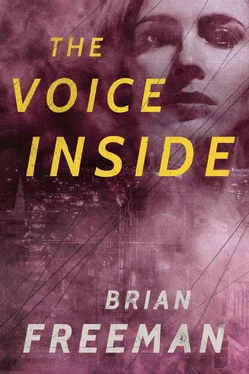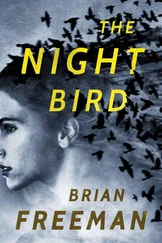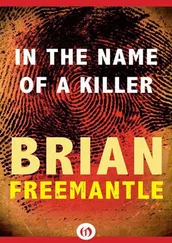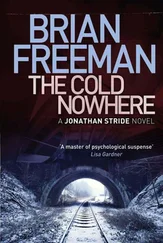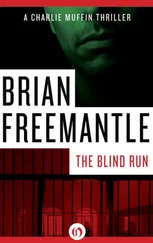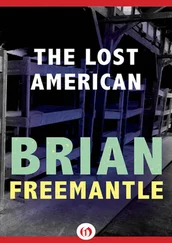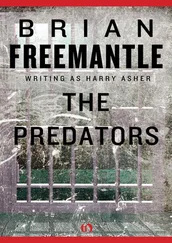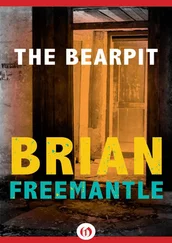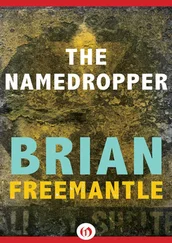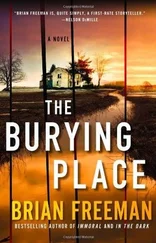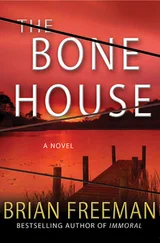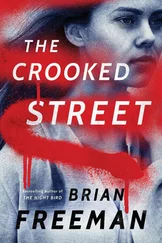Josephine simply opened the door and let him walk into the house. He went into the small living room, where Hope’s self-portrait stared down at him, full of quiet despair. Hope had been keeping her secret in plain sight all this time.
He showed Josephine the same photo he’d shown her the previous day.
“This sketch in the background of the picture,” Frost said. “That’s what you saw when you studied it. That’s why you reacted the way you did. Hope drew that sketch, didn’t she?”
Josephine didn’t need to look at it again. “Yes, she did.”
“You should have told me immediately.”
“After so much time, why does it matter?”
“It matters because all the victims had sketches like this done when they were babies. That’s the connection that ties them together. Did you know that Hope was doing sketches of new mothers at the hospitals where she was working? Did you ever see them?”
The old woman stared up at the portrait of her daughter. “Of course.”
“Tell me about them.”
Josephine walked over to an old-fashioned mahogany martini table. She opened the drawer and dug through a stack of letters and photographs inside. She found what she was looking for — a yellowed sheet of paper torn from a spiral notebook — and handed it to him. It was a sketch done in ballpoint pen of a mother and child, almost identical in structure to the sketches Frost had seen. This one had the artist’s signature written in script below the sketch: Hope Stillman . Even the handwriting matched the names written on the other sketches.
“I had a photograph of myself in the hospital holding Hope on the day she was born,” Josephine said. “I showed the picture to Hope when she was ten years old. A day later, she came back to me with this sketch. She did it from memory. You can see she had a gift for art even then. I was proud and sad at the same time.”
“Sad?” Frost asked.
“Look at Hope’s face in the sketch,” Josephine said.
Frost did. The face of the baby was like the face in the self-portrait over the fireplace. Unhappy. Tortured. Even at ten years old, Hope was already wrestling with demons.
“That’s the one thing she changed from the photograph,” Hope’s mother went on. “She’s smiling in the original picture. The way any innocent baby would be. But not in the sketch.”
“And what about the drawings at the hospitals?” Frost asked.
“I told you, Hope liked to visit the new mothers. I think she was looking for something that had always eluded her. She wanted to believe that a baby would complete her. She saw joy in the faces of the mothers, and it was a joy she’d never been able to find herself. After she talked to them, she would make these little sketches at home. All from memory. She made sure the original went to the mothers, but she kept copies for herself. And she made copies for me, too. She only sketched the girls, though. Hope never wanted anything for herself except a daughter. She made dozens of these portraits.”
Dozens.
Hope had visited each of the mothers. She’d probably held each child in her arms. They were all on Rudy Cutter’s list. Unless Frost could stop him, Cutter was far from done. But now, finally, they had hard evidence to tie him to every murder. They could rearrest him. If they could find him.
“Do you still have copies of those sketches?” Frost asked.
Josephine nodded. “Yes, I kept them in an album.”
“I really need to take that album with me,” he said.
A wistfulness came over Josephine’s face. “I know. I already went and retrieved it from the attic. It’s in the other room. I’ll get it for you. I was going to call you today to tell you about it. I couldn’t live with the secret. Back then, you have to believe me, I had no idea that those sketches had any importance. It never occurred to me. If I’d realized what Rudy was doing, I would have told someone.”
Frost wondered if that was true, but it didn’t matter.
What mattered was seeing the faces, names, and birthdates in those sketches.
Josephine left the room. He waited near the fireplace with Hope. He could feel her watching him. The portrait had an odd way of making her come to life. Her madness hadn’t left; it had somehow found its way from those sketches into Rudy Cutter’s mind.
Hope’s mother returned, carrying a small photo album with both hands. She handed it to Frost, who treated it delicately. The album had a musty smell, and dust was on the spine. When he opened it carefully, he saw that the album had nothing but black paper pages with rough, unfinished edges. No hooks, no plastic. On every page, Josephine had carefully taped one of Hope’s sketches. They were all the same, but they were all different. The paper and tape had become brittle; the ink was fading.
Frost turned one page after another. He saw the faces and names. Mothers and children. Many were strangers, but he also saw those he recognized. Daughters who had become victims.
Camille and Melanie.
Gilda and Nina.
Kelly and Hazel.
Weng and Shu.
This album, gathering dust in an attic, could have changed everything. Cutter would still be in prison. Some of the victims might still be alive. Katie might be alive. And Jess.
He turned another page, and he saw two names under the next sketch.
Sonja and Maria.
Maybe there were others — Maria was a common name — but he knew he’d found Maria Lopes, simply by looking at the mother’s face. The woman he’d met earlier that day in the hills of San Bruno looked just like her mother. He called up on his phone the DMV records he’d pulled for the various women named Maria Lopes in the Bay Area, and when he checked the birthday for Maria Lopes in San Bruno, he saw that it matched the birthdate written on the faded sketch.
She was the woman he was looking for.
He thought about Maria’s house, near the hills and trails of Sweeney Ridge.
He remembered the phone call from Rudy Cutter and the fierce, intermittent noise of the wind blowing in the background.
Frost knew where Cutter was. He grabbed his phone to send the police to hunt him down.
The late afternoon became dusk.
Fog massed like an army on the ridge, and the temperature fell. Lights began to come on in the houses that dotted the valley. Rudy waited, motionless and half-frozen, in the nest on the hillside where he’d spied on Maria Lopes for hours.
He didn’t feel alone. Hope was with him. She was always with him, like a bad angel. Every time he wielded the knife, he killed her, but time after time, she came back to life, and he had to do it all over again. One by one by one by one, he erased each glimmer of who she was. Each trace of what she’d left on earth.
And still she sat beside him.
It had been a long, terrible journey from April 1 nine years ago until now. He had never sought it out; instead, fate had found him that day, like an April Fool’s joke. It was supposed to be the last day of his life. He’d finally been ready to kill himself, to shut the door on his empty world. He’d tried several times before and failed. With pills. With a rope. With the tailpipe of Phil’s Cadillac. In the end, he’d backed out every time before death took him away.
But not again.
He’d had it all planned. April 1. He was going to go to one last Giants game with Phil. He was going to have a burger and a beer. And then, as it neared midnight, he was going to drive to the Golden Gate Bridge and follow the example of the jumpers who’d come before him. Once he cleared the rail, second thoughts didn’t matter. You couldn’t change your mind on the way down.
Instead, his life and destiny had changed completely before he got to the bridge. He thought of all the improbable things that had happened that day to set him on a different path.
Читать дальше
